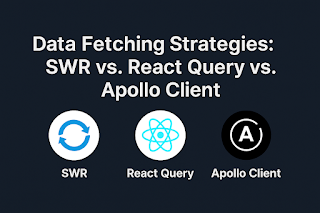Implementing Microservices with Front-End & Back-End Separation
In today’s landscape of scalable and modular software development, microservices have emerged as the go-to architecture for building complex applications. One of the key advantages of microservices is the clean separation of concerns — especially between the front-end and the back-end. This separation enables faster development, improved maintainability, and seamless scalability.
What Are Microservices?
Microservices are small, independently deployable services that communicate over lightweight protocols like HTTP or messaging queues. Each microservice is responsible for a specific business function and can be built using different languages, databases, or frameworks — making the system highly modular.
Front-End and Back-End Separation
Separating the front-end from the back-end in a microservices architecture involves:
- Creating a standalone front-end application (SPA or MPA) that consumes APIs exposed by individual microservices.
- Ensuring each microservice provides a well-defined interface (REST, GraphQL, gRPC) for data access.
- Decoupling the deployment lifecycle of the front-end and each back-end service.
Benefits of Separation
- Independent Scaling: Scale UI and backend services independently based on demand.
- Better Developer Experience: Front-end and back-end teams can work autonomously.
- Faster Deployments: Continuous deployment pipelines can be implemented for each layer.
- Technology Flexibility: Choose optimal tools for each service (e.g., React for front-end, FastAPI or Node.js for back-end services).
Implementation Blueprint
- Design APIs First: Use OpenAPI/Swagger to define your service contracts.
- Host Microservices: Deploy services independently on platforms like Kubernetes, AWS Lambda, or Docker Swarm.
- Frontend Communication: Use a BFF (Backend-for-Frontend) or API Gateway to aggregate data and enforce security/authentication.
- Versioning and Failover: Ensure backward compatibility in APIs and set up circuit breakers for fault tolerance.
Example Tech Stack

Security & Challenges
- Cross-Origin Resource Sharing (CORS) setup is crucial.
- Authentication can be centralized using OAuth2 or distributed with JWT.
- Data consistency and inter-service communication can get complex — consider using event-driven architecture with tools like Kafka or RabbitMQ.
Final Thoughts
Adopting microservices with front-end and back-end separation isn't just about architectural elegance — it's about agility, resilience, and future-proofing your app. While it introduces new complexities in orchestration and monitoring, the trade-off in scalability and maintainability is well worth it.
#Microservices #Frontend #Backend #WebDevelopment #API #React #FastAPI #SoftwareArchitecture #DevOps #Scalability #JavaScript #TypeScript #Docker #Kubernetes #GraphQL #APIManagement




Comments
Post a Comment